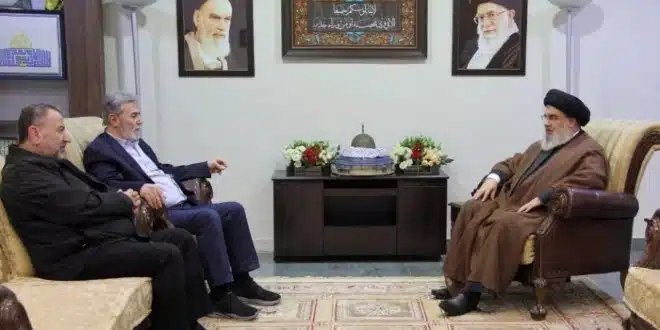Hezbollah’s leader, Sayyed Hassan Nasrallah, recently held discussions with Ziyad al-Nakhala, the leader of the Palestinian Islamic Jihad. The meeting focused on the ongoing situation in the Gaza Strip, the West Bank, and other areas of conflict, as stated in a Hezbollah announcement.
Since October 8, Hezbollah has launched 1013 attacks against northern Israel, showing solidarity with Gaza and Hamas.
The meeting followed Iran’s Foreign Minister Hossein Amirabdollahian’s visit to Beirut, where he met with Nasrallah, Lebanon’s caretaker Prime Minister Najib Mikati, and Parliament Speaker Nabih Berri. During Amirabdollahian’s visit, an Israeli drone targeted a vehicle near Jadra, a coastal town in Lebanon, resulting in casualties. This incident marked one of the deepest strikes into Lebanon since the conflict began on October 8. Notably, this strike followed an earlier attack on January 2 that eliminated a senior Hamas figure in Beirut.
Additionally, Israeli forces attacked the Lebanese border village of Houla, causing casualties among civilians exiting a mosque after prayers.
Amirabdollahian also touched upon the broader regional tensions, suggesting that peace would require an end to what he described as genocidal acts and warfare against Gaza and the West Bank.
In response to regional hostilities, the U.S. carried out defensive operations against threats in Yemen, targeting unmanned vessels and missile systems due to rebel activities in the Red Sea, which have jeopardized a crucial trade route.
Moreover, Israeli airstrikes targeted areas near Damascus, Syria, resulting in three deaths.
The region’s tensions escalated further with a U.S. airstrike in Baghdad that killed a Kataib Hezbollah commander. This action was in retaliation for the deaths of three U.S. troops in Jordan, highlighting the ongoing cycle of violence and retaliation in the region.


